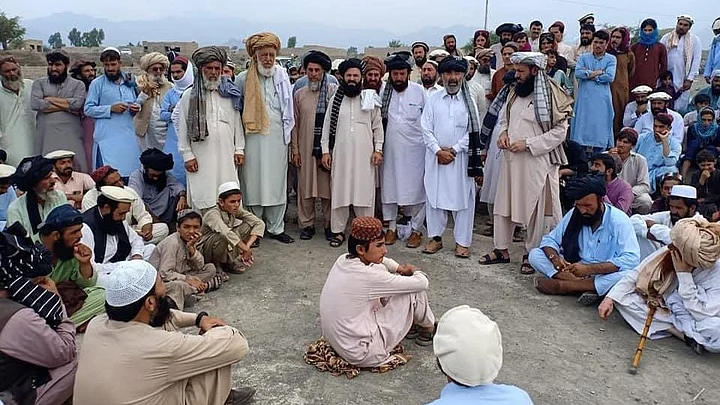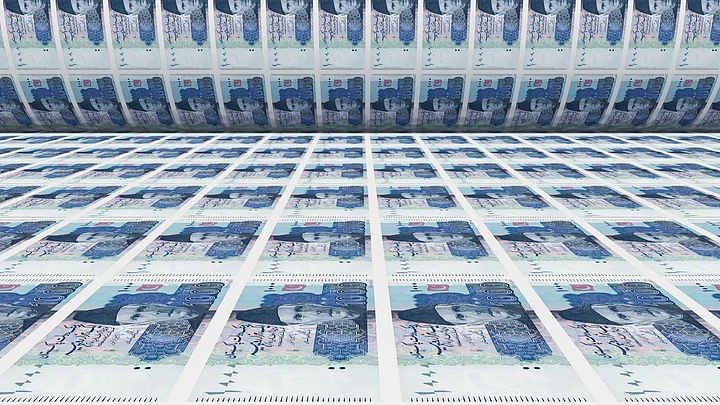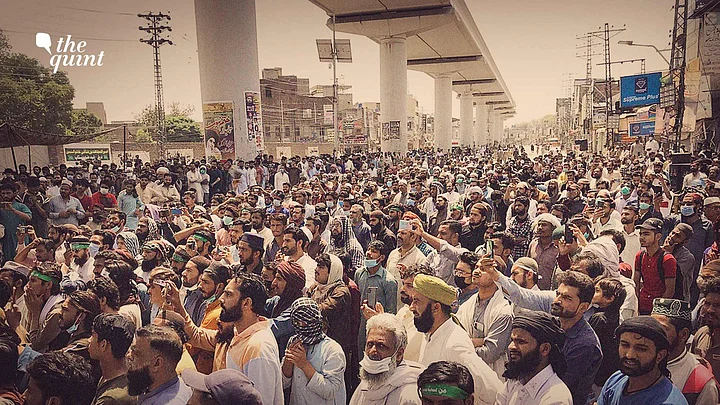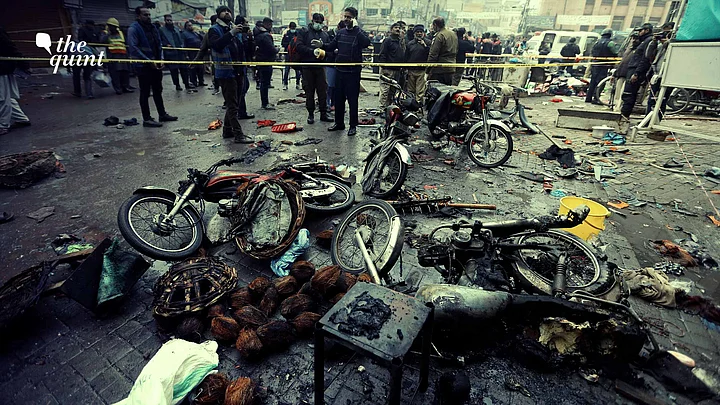Even as everyone in India hoisted their tricolours for ‘Har Ghar Tiranga’ on Monday, there are people on the outer edges of Pakistan who have been putting up flags, but black ones, every single day for the past several weeks. Protests are going on in the Mir Ali area of Waziristan, which is almost entirely away from media attention. The unrest is against decades of merciless counter-terrorism operations by Rawalpindi, which includes not just the dreaded ‘knocks in the night’ by security forces, but ‘terrorist’ groups in the pay of the state who knock off anyone deemed as anti-state. Caught between these two, the people resorted to a sit-in and blocked the roads, in what seems to be a last desperate attempt to save themselves.
This Place Called Waziristan
Waziristan is a strange place; columnists like to call it ‘The most dangerous place on earth’, reliving the days of the British who fought fierce battles in these areas and brought a new meaning to the term ‘pacify’, with draconian laws and a ‘divide and rule’ policy that allowed a tiny island nation to rule over millions. The fact that the English meticulously recorded everything helped create almost a mythology for an area that has got little academic attention since then. Yet, it was once part of the large swathe of Buddhism that was centred around Swat, from where Guru Padmasambhava brought the religion to Tibet. Today, it is a hotbed of everything that Buddhism holds in aversion: violence, religious extremism and denial of rights to its people.
This is the result of over three decades of Pakistan’s adventurism in Afghanistan, when tribal areas were the launchpads for jihadis from the mujahideen to the Taliban, including the so-called 'Punjabi’ or Pakistani Taliban, mostly turncoats who had migrated from the ranks of the mujahideen and grew in an atmosphere of guns, narcotics, and religion, all of which were nurtured by the Pakistanis, for good reason. The narcotics funded the war and bought the guns, and the extreme religion was meant to create a new identity that would swear loyalty to a Muslim ‘Ummah’ and forget ethnic bonds that tied Pashtuns from both sides of the Durand line together. It didn’t work. Today, they are probably more united than ever before, much to Islamabad’s chagrin.
The Tehrik-e-Taliban
But the irony lies elsewhere. For years, the Tehrik-e-Taliban (TTP), the largest section of the Pakistani Taliban, alternately fought and made peace with the Pakistani army, with attacks abating somewhat as they allied with the Afghan Taliban to grab the bigger prize, which was Kabul. Once that was done (again with the ISI’s guiding hand), the TTP turned to their original enemy, killing, by one account, some 97 Pakistani soldiers and officers between January and March 2022. Rawalpindi turned to the Afghans to force the TTP into talks, but Zabiullah Mujahid, the rather mysterious Taliban spokesperson said that the TTP was for Pakistan to resolve, not Afghanistan. That led to Pakistan strafing TTP strongholds in Afghanistan, possibly in an ironic imitation of India’s own strikes against terrorist camps in Pakistan, and to pressure the Taliban.
The plan went badly awry as UNICEF (UN Children’s Fund) officials confirmed that at least 20 children had been killed in the strike on Khost and Kunar. For Pakistan, this was no anomaly. It had long used air strikes and artillery on its own people, with the devastation seen by a team of visiting journalists in 2018.
In that respect, it was not like India at all. After all, the term ‘fighting with one hand tied behind the back’ has become emblematic of Kashmir operations. Now, the TTP are negotiating an end to the war, just as the people want an end to operations. Islamabad’s counter-terrorism operations seem to have led to a common desire between terrorist oppressors and the oppressed, which is to get away from Pakistani iron rule.
People Want the Violence to Stop
The people’s demands are hardly unreasonable. What they want is for the killing to stop, and a return to a reasonably normal way of life. The protests were led by the Utmanzai tribe, with full support of locals. Dozens of loaded vehicles are stranded on the Miramshah-Ghulam Khan highway that leads to Afghanistan as the protests snowball.
Not that this has reduced the violence. An army convoy was hit in the very same area, killing soldiers and civilians. The significance of that strike was the timing. It occurred just hours after what was probably a roadside bomb killed top TTP leader Abdul Wali (alias Omar Khalid Khorasani), Mufti Hassan Swati, and Hafiz Dawlat Khan Orakzai, in Barmal in Paktika; he was believed to be travelling to a meeting to discuss peace with Pakistani officials and the Taliban acting as mediators. All of these areas, including North Waziristan, are strongholds of Sirajuddin Haqqani, more Pakistan than Afghan, and who, like Khorasani, has a huge bounty on his head promised by the US government.
Ayman al-Zawahiri, killed barely a week earlier, had a $25-million price on his head, while Khorasani only rated $3 million. But it’s a lot of money anywhere, particularly in a starving country. Haqqani has a $5-million bounty, which could be why he is rumoured to have hastily shifted out of Kabul to his strongholds here.
The TTP's Demands
That’s assuming the US ordered the killing. But it has no reason to. In 2014, Khorasani’s group was responsible for the massacre of 23 captured Pakistani soldiers as the TTP held peace talks with Pakistani authorities and various other attacks. The Pakistanis may be talking to them, but have no reason at all to ensure their survival. In fact, the talks may be a clever way to smoke out otherwise well-hidden leaders. Talks have now been going on for months with some progress. The TTP’s demands include a reversal of the merger of the tribal areas with the province of Khyber Pakhtunkhwa, withdrawal of the army, and release of its prisoners.
The Pakistani army has released some vicious TTP leaders to Kabul, offering political space, while demanding that TTP give up its weapons and organisation. That’s highly unlikely, especially now. No TTP leader worth his salt is going to trust the Pakistanis after the killing of Khorasani. The peace talks themselves have expanded, bringing in elders from not only South Waziristan but also Malakand, which adjoins the deep north of Pakistan, where they seem to want virtual autonomy.
The problem then comes back to the fear of a future ‘Pashtunistan’ taking shape slowly. The people don’t want the Pakistanis, the terrorists don’t want Rawalpindi, and even the Afghan Taliban refuse to recognise the Durand Line. It's fast going out of Islamabad’s control, due to, ironically, its own actions. Years ago, the then-Chief of Army Staff, General Kayani, warned everyone that Pakistan’s greatest threat was internal rather than external. What he should have said was that Pakistan’s inability to live peacefully with its neighbours was rebounding on itself. The people's protests in Waziristan are only another instance of a crumbling state, at war with itself, and its economy in ruins.
Even as Prime Minister Shahbaz Sharif appoints a jirga to talk to the tribals, what is needed is a hefty dose of peace and tranquillity, which will enable them to go back to break their reputation as the Wild West of British lore, and find again whatever national characteristic it was that led to the propagation of one of the most peaceful religions on earth.
That doesn’t mean a return to Buddhism, but a realisation of the principles that underlie it, surely common to all religions everywhere. That seems unlikely, as political parties fight it out in the streets and in the courts, and in a war of words in the media. Waziristan will be forgotten, and it might just slip away.
(Dr Tara Kartha is a Distinguished Fellow at the Institute of Peace and Conflict Studies (IPCS). She tweets @kartha_tara. This is an opinion article and the views expressed above are the author’s own. The Quint neither endorses nor is responsible for them.)
(At The Quint, we question everything. Play an active role in shaping our journalism by becoming a member today.)



